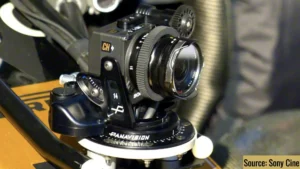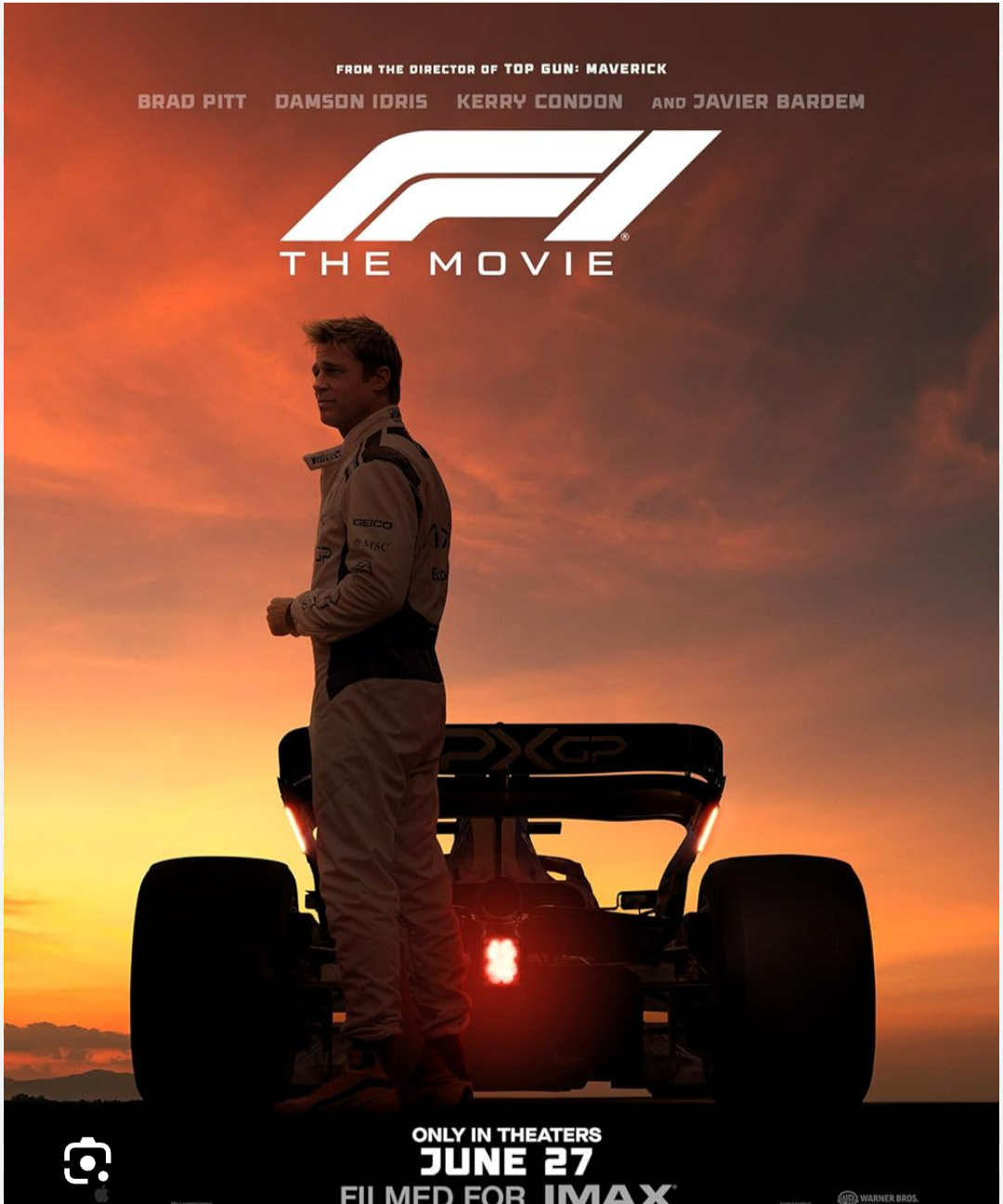
F1 : movie – Stunning Cinematography!
Jul 06 2025
F1 creating a sensational impact everywhere for breath taking visuals never seen before

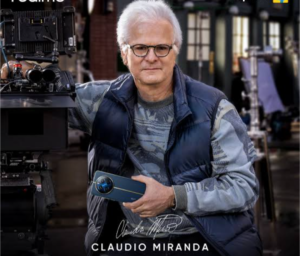
🎬 Inside the Cockpit: How F1 Revolutionized Racing Cinematography
When director Joseph Kosinski (Top Gun: Maverick) and cinematographer Claudio Miranda set out to capture the visceral thrill of Formula 1 racing for their film F1, they faced an exhilarating challenge:
How do you bring audiences into the driver’s seat—at 200 mph—without compromising cinematic beauty?
The answer? Invent entirely new camera systems.
Two groundbreaking technologies emerged from this creative mission:
🔧 a custom iPhone-based module, engineered by Apple, and
📸 a bespoke “sensor-on-a-stick” camera developed by Sony.
Together, they transformed the cockpit into a cinematic universe.
🍎 Apple’s Custom iPhone Camera Module
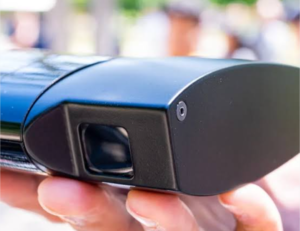
A tiny revolution inside the world’s fastest machines.
Apple didn’t just provide a phone—they built an entirely new camera system, designed from scratch to live inside Formula 1 cars. This was more than product placement—it was filmmaking evolution.
🚧 The Challenge:
- Traditional F1 broadcast cameras fell short of cinematic standards.
- Cinema cameras like the VENICE 2 were too bulky, hot, and heavy.
- Goal: Capture true POV shots—without affecting the car’s aerodynamics or violating F1 safety norms.
⚙️ The Solution:
- Core Tech: A modified iPhone 15 Pro sensor, ND filters, battery, and custom chip running a special iOS firmware for filmmaking.
- Features:
- Captured footage in Apple ProRes in log format.
- Supported ACES color science for seamless integration in post.
- Used a custom iPad app via USB-C for real-time adjustments (shutter, ISO, white balance).
- Design Masterstroke: Shaped to exactly mimic the weight and footprint of a broadcast camera—so it didn’t disturb performance.
🎥 The Impact:
These modules were tested on actual F1 cars during 2023 and 2024 races—surviving heat, 5G forces, and vibration.
They provided intimate, first-person shots from the driver’s POV, making you feel like you’re inside the helmet.
And yes, features like log encoding and ACES compatibility have already trickled into consumer iPhones. Innovation, reversed.
🎥 Sony’s “Sensor-on-a-Stick” – Codenamed Carmen
A custom-built warrior, born for speed.
With Kosinski and Miranda demanding cinema-grade imagery from within a racecar cockpit, Sony went back to the drawing board.
🔬 The Vision:
- A 6K full-frame sensor, placed just inches from the driver.
- Compact. Lightweight. Tough as carbon fiber.
- Inspired by the Sony Rialto system used in Top Gun: Maverick—but shrunk and reengineered for Formula 1’s brutal physics.
🛠 Key Features:
- Sensor: From Sony FX6, rehoused in a custom Panavision-built head.
- Lens: Voigtländer 10mm f/5.6 for ultra-wide immersive shots.
- Recorder: Remote Sony FR7 body, capturing XAVC-I 4K 10-bit video at 600 Mbps.
- Mounting: Sensor separated from body (thus “on a stick”) and embedded inside the cockpit.
- Control: RF-based remote pan/tilt/focus system with Kosinski and Miranda monitoring 16+ live feeds at once!
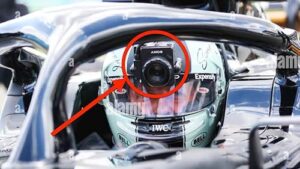
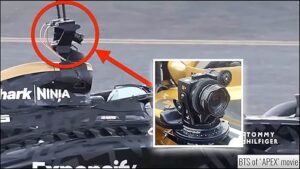
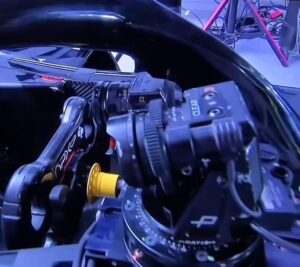
🚗 Built to Endure:
- 21 units built.
- Used drop-in ND filters, external stabilization, and custom rigs to endure the violence of F1 speed.
- Tested at Willow Springs, proven at the world’s biggest races.
🏎️ Beyond the Cameras: The Making of F1
🎬 Real Races, Real Danger
The film shot during live Formula 1 Grand Prix weekends—Silverstone, Monza, Vegas.
To ensure authenticity, production built six F2 cars modified by Mercedes, rigged with up to 16 cameras each.
Brad Pitt and Damson Idris drove them for real, following months of F3/F2 training, with coaching from Lewis Hamilton himself.
🛠️ Seamless VFX, Not Spectacle
VFX was used not to fake reality but to invisibly enhance it—overlaying fictional team logos on real footage, re-skinning cars, and matching crowd reactions. Framestore made magic feel natural.
🔊 Sonic Immersion
Custom haptic feedback trailers for iPhones (via iOS 18.4+) allowed viewers to feel the roar of the engines, syncing sound with physical response.
💥 The Result?
A film that doesn’t just show you Formula 1—it puts you inside the cockpit.
🏁 Technical Marvels:
- First cinematic use of a custom iPhone sensor system.
- Debut of Sony’s ultra-compact Carmen prototype.
- Up to 4 cameras per car, capturing from helmet, airbox, nosecone, and cockpit walls.
- Footage seamlessly cut with Sony VENICE 2 and DJI Ronin 4D for external tracking and stabilized action.
🌍 Industry Impact
This is more than a movie—it’s a turning point in cinematography:
- Apple’s module brings consumer tech into professional filmmaking, opening new doors for mobile creators.
- Sony’s Carmen proves IMAX-worthy cinema can be captured in spaces the size of a helmet.
- This collaboration between Apple, Sony, Mercedes, and Hollywood may change how we film everything from racing to extreme sports and drones.
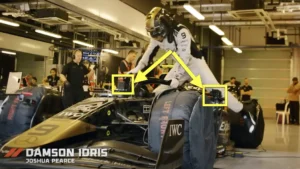 🎥 F1: Not Just A Film—A Cinematic Breakthrough
🎥 F1: Not Just A Film—A Cinematic Breakthrough
With a budget near $300 million, F1 isn’t just a spectacle. It’s a statement:
When storytelling demands it, technology must evolve.
Article by
CJ Rajkumar
Author/ Cinematographer

